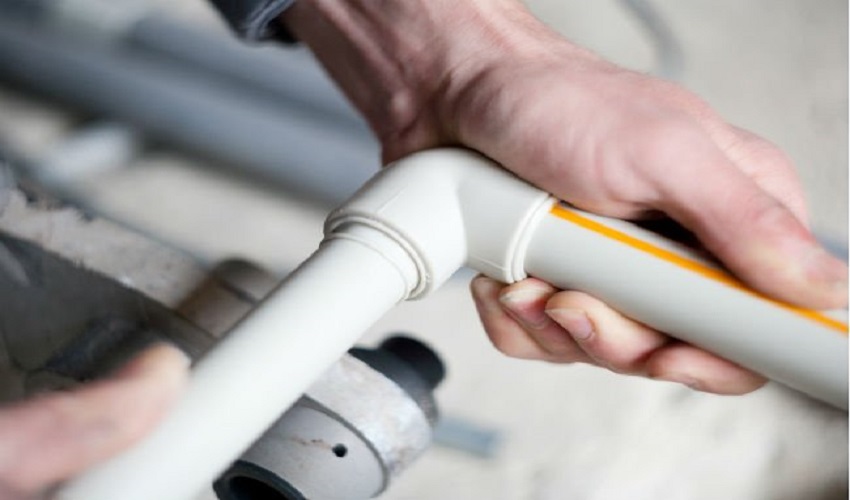
PVC is the acronym for polyvinyl chloride, a petroleum-derived plastic widely used in plumbing or construction. Its popularity in these fields is partly because it is a plastic resistant to most chemical agents. It is odorless, tasteless, and harmless. It does not degrade and is not flammable. For all this, it is perfect for pipes that have to be joined with a specific material and in a certain way. Today we are talking about how does PVC glue work.
How does PVC glue work?
It cleans the surface well
We clean the rough edges of the cut ends of the PVC pipe with a knife. We must make sure that the tubes fit against the ends of the mouth of the tube. In each joint, we must make marks to align them later, indicating the depth of the pipe’s mouth. For larger roughnesses, it is advisable to use sandpaper. It is important to leave the surface smooth and apply a PVC cleaner to ensure that the pipes are hermetically sealed.
You can apply the PVC glue on all surfaces
We apply the liquid glue on both surfaces, making sure that it is free of lumps. While we are introducing the tube, we press and make a 1/4 turn to make sure that we eliminate excess air. We hold down for about 20 seconds.
You have to bear in mind that products for gluing PVC pipes only act on this material and cannot be used with other types of plastic. It will not be the same glue that you need either, depending on whether the pipes you want to join will carry hot or cold water. You will need a more transparent glue for cold water and a more yellow one for hot.
It works on pipes
Plastic pipes come in different shapes and purposes. According to their functions, plastics are as diverse as tubes themselves. PVC glue is one of the many types of pipe adhesives. With this product, you can assemble a pipe network, depending on your particular needs.
Simply put, PVC glue doesn’t work on all types of plastic. Just as wood glue is used primarily as an adhesive for this material, PVC glue, more precisely known as solvent cement, is made for PVC pipe plastics. These pipes are used in waste, drainage, and ventilation systems. Some examples of these pipes include aqueducts or irrigation networks and sewer lines.
Plastic
PVC pipe is made from a plastic called polyvinyl chloride, so PVC glue is made exclusively for this material. This plastic offers several advantages. It is recyclable, very durable, and does not degrade when exposed to sunlight. This makes it very useful for indoor and outdoor systems. It is also much lighter than its metal counterparts.
Solvent cement and primer
Although polyvinyl chloride glue is aimed at only one type of plastic, the application process changes depending on your location. Sometimes you may need to use a primer before applying the glue. Primer is unnecessary unless specified by your local building code, so familiarize yourself with these regulations before starting work. The primer is chemically similar to glue, but your job is to smooth the tube before applying glue.
Alternatives
PVC glue may not work on all plastics, but you have other options. Specifically, you can use multipurpose solvent cement. It is made for pressure lines, potable water, and conduit pipes. This product will work on all types of pipes, including PVC. This is useful if your repairs include other plastics for pipes in addition to PVC.
What Kind Of PVC Glue Is Used For House Plumbing?
A polyvinyl chloride (PVC) is the popular construction material for drainage, water, and ventilation applications. It can be connected to traditional copper, iron, or steel pipe with rubber gaskets that use hose clamps to secure the two pipes together. PVC to PVC connections, however, are made with PVC cement, which is often called PVC glue because of its appearance but is actually more like a weld in your final product.
PVC Cement Basics
PVC cement actually works by melting a thin layer of PVC on both ends that are to be glued. This is why cement is applied to both the pipe and its connection when it is assembled. In this way, cemented PVC is actually similar to welded steel or iron pipe in that the two pieces are fused together. This forms a better seal and also means that a cemented PVC cannot be separated without cuts.
Preparation
PVC cement is relatively fast-acting, so all preparations must be made for joining before cementing is applied to the pipe and fitting. Both PVC ends should be cleaned and sanded, so they are free of dust, dirt, and all small burrs from the plastic cut.
Active ingredient
PVC cement contains the solvent butanone or methyl ethyl ketone, which softens PVC, and PVC resin, which is essentially liquid PVC in suspension. When applied, the butanone begins to dissolve the top layer of PVC and then the evaporation process begins, leaving only the PVC resin to bond the two pieces together.
Precautions
Butanone and other ingredients in PVC cement can be dangerous if inhaled or absorbed through the skin. You should always work with gloves and eye protection in a well-ventilated area. Butanone is flammable and should not be exposed to rusty metal, such as rusty iron or steel pipes, as it can burn and cause injury.
